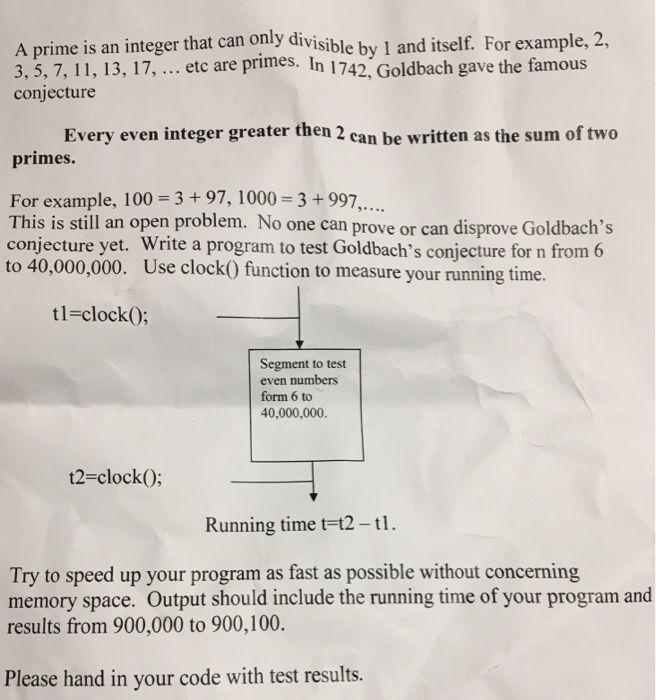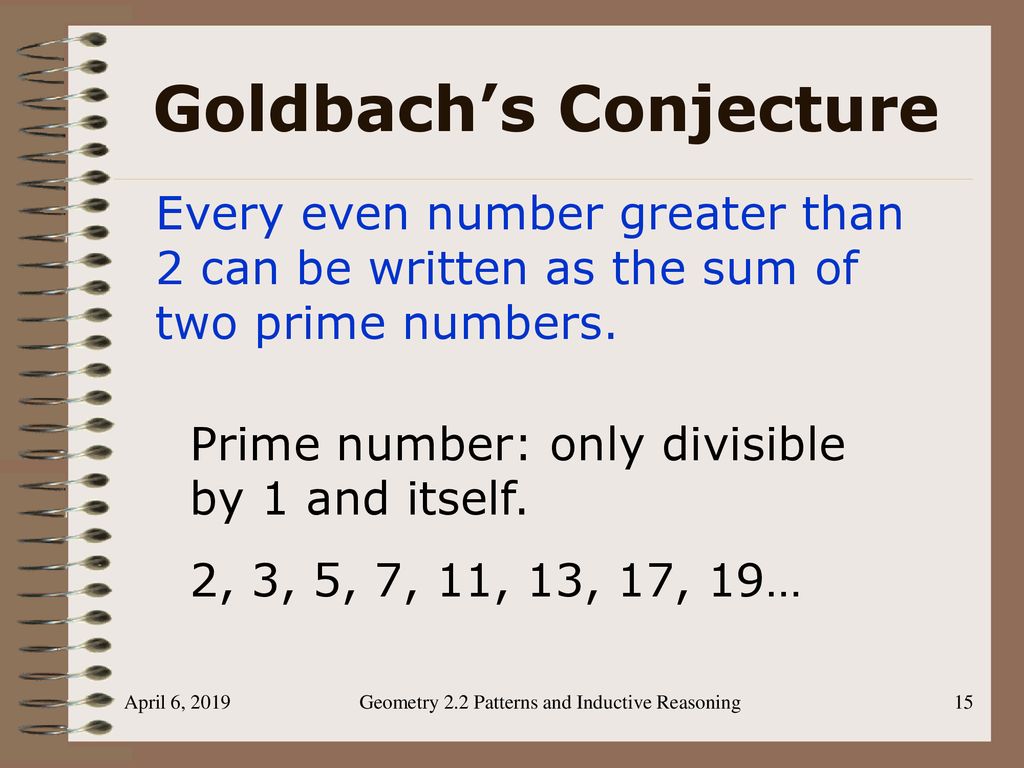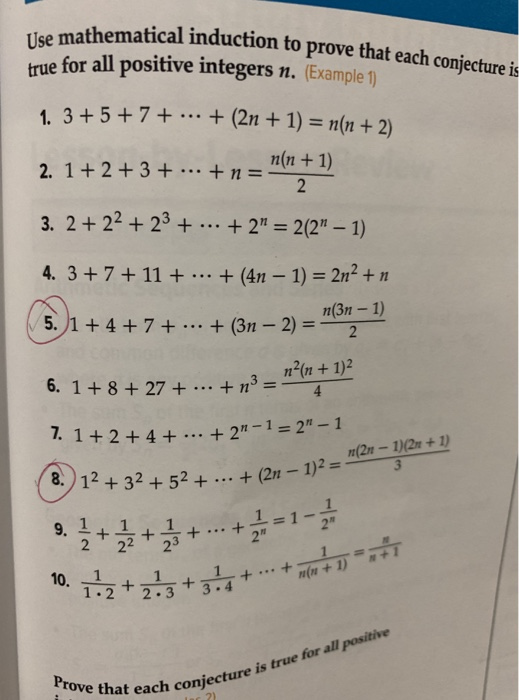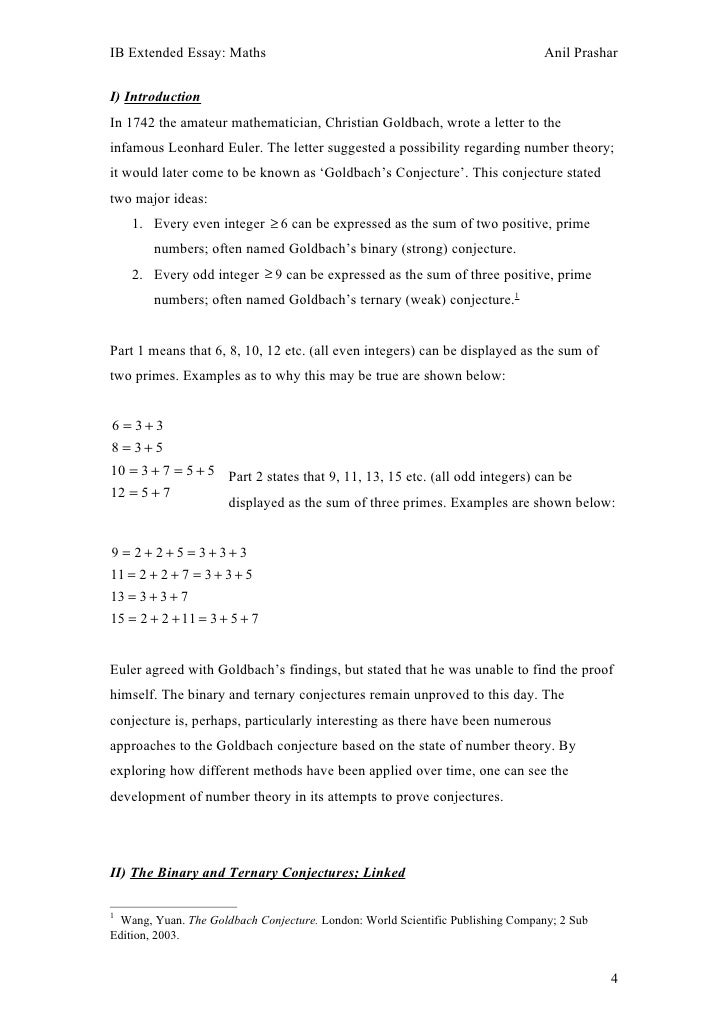Conjecture 2 3 5 7 11

2 3 5 7 11 13 17 19 23 29 31 37 show that goldbach s conjecture is true for the even numbers from 20 to 40 by writing each number as a sum of two primes.
Conjecture 2 3 5 7 11. Gilbreath was doodling on a napkin. The sequence of gaps the differences between each prime and the next is 1 2 2 4 2 4 2 4 6 2 6 4 2 and 4. 6 3 3. The primes up to 50 are 2 3 5 7 11 13 17 19 23 29 31 37 41 43 and 47.
2 3 5 7 11 13 conjecture. 2 3 5 7 11 13 17 19 23 29. 42 is the next number in this sequence. 2 3 5 7 11 13 17 3 2 1 5 3 2 7 5 2 11 7 4 13 11 2 17 13 4 therefore the next number is obtained thus.
X 17 2 x 19 ans. 4 2 2. The rest of the gaps are even numbers. 8 3 5.
In 1958 norman o. However the sequence 2 3 5 7 11 are the first five prime numbers. I ve illustrated the goldbach conjecture for some even numbers below. Answer by jim thompson5910 35256 show source.
2 2 1 3 3 2 5 5 2 7 7 4 11 11 2 13 13 4 17 next term 17. This number sequence is adding the next prime number to the last number. He started by writing down the first few primes. 100 3 97 or 11 89 or 17 83 or 29 71 or 41 59 or 47 53.
So 1 2 3. As numbers get larger primes become less frequent and twin primes rarer still. The number 1 appears only once because all primes except for 2 are odd. 10 5 5 or 3 7.
Find an answer to your question 4. For example 3 and 5 5 and 7 11 and 13 and 17 and 19 are twin primes. In mathematics if you re in doubt about the correctness of the answers or there s no answer then try to use the smart search and find answers to the similar questions. Then 3 3 6 6 5 11 11 7 18 18 11 29.
2 3 5 7 11 13 17 19 etc. So the next prime numbers after 11 are 13 then 17 19 23 29 31 37 41 43. Clearly all prime numbers other than 2 must be odd.
















